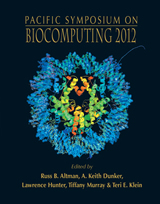Artificial Functional Difference Between Microbial Communities Caused by Length Difference of Sequencing Reads
Quan Zhang1, Thomas G. Doak2, and Yuzhen Ye1
1School of Informatics and Computing, Indiana University, 150 S. Woodlawn Ave, Bloomington, IN 47405, USA;
2Biology Department, Indiana University, 1001 E. 3rd Street, Bloomington, IN 47405, USA
Email: quzhang@indiana.edu; tdoak@indiana.edu; yye@indiana.edu
Pacific Symposium on Biocomputing 17:259-270(2012)

Abstract
Homology-based approaches are often used for the annotation of microbial communities, providing functional profiles that are used to characterize and compare the content and the functionality of microbial communities. Metagenomic reads are the starting data for these studies, however considerable differences are observed between the functional profiles—built from sequencing reads produced by different sequencing techniques—for even the same microbial community. Using simulation experiments, we show that such functional differences are likely to be caused by the actual difference in read lengths, and are not the results of a sampling bias of the sequencing techniques. Furthermore, the functional differences derived from different sequencing techniques cannot be fully explained by the read-count bias, i.e. 1) the higher fraction of unannotated shorter reads (i.e., “read length matters”), and 2) the different lengths of proteins in different functional categories. Instead, we show here that specific functional categories are under-annotated, because similarity-search-based functional annotation tools tend to miss more reads from functional categories that contain less conserved genes/proteins. In addition, the accuracy of functional annotation of short reads for different functions varies, further skewing the functional profiles. To address these issues, we present a simple yet efficient method to improve the frequency estimates of different functional categories in the functional profiles of metagenomes, based on the functional annotation of simulated reads from complete microbial genomes.
[Full-Text PDF] [PSB Home Page]